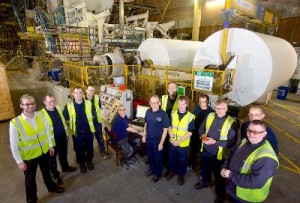 A recent CDS seminar saw professional advisers gather in Glasgow to hear from Graeme Nuttall OBE, author of the Nuttall Review of Employee Ownership.
A recent CDS seminar saw professional advisers gather in Glasgow to hear from Graeme Nuttall OBE, author of the Nuttall Review of Employee Ownership.
Here, Graeme – partner of Fieldfisher – discusses the growing enthusiasm for the model, the important role played by CDS, new tax reliefs and Scotland’s success stories.
I was delighted to be invited to speak to an audience of professional advisers in Glasgow and was hugely impressed at the level of interest and enthusiasm that exists for employee-owned business structures.
There can be no doubt – the case for employee ownership has been made. A few years ago, a company owner looking to explore employee ownership would likely have been dissuaded from this path by their adviser. Now, advisers are much more likely to present employee ownership as a feasible succession option for their clients.
Co-operative Development Scotland (CDS), under the leadership of Sarah Deas, must take some credit for this achievement. CDS has been instrumental in building the employee ownership community in Scotland, and engaging with professional advisers to help them recognise the role these individuals and firms play in the development of employee ownership.
Advisers will know about the tax advantaged share plans designed to increase individual share ownership amongst a firm’s employees. These have been around for almost 40 years. In the Nuttall Review, I wanted to give greater priority to the trust model of employee ownership.
This is a simple model and gives employees a collective ownership of the company. I was delighted that as a result of the findings of the Nuttall Review a new tax regime for “employee-ownership trusts” (EOTs) was introduced last year. Briefly, there are two main new tax exemptions:
- From 6 April 2014 there is an exemption from Capital Gains Tax (CGT) on gains on certain disposals of shares in a trading company (or in a holding company of a trading group) that provides an EOT with a controlling interest in that company; and
- From 1 October 2014 there is an exemption from Income Tax (but not National Insurance contributions) of £3,600 per employee per tax year for certain bonus payments made to all employees of a company or group where an EOT has a controlling interest.
The CGT exemption has attracted attention to employee buy outs as a succession solution. Instead of a sale of shares being taxed typically, for owner managers, at an effective rate of 10% after entrepreneurs’ relief, there is an unlimited exemption from CGT.
The Income Tax exemption means there can also be a tax benefit for staff in this business model. In most cases dividends otherwise payable to the EOT as a majority shareholder are waived by its trustee and are paid out instead as bonuses to all staff – tax free up to £3,600 per employee per tax year.
This is a key concept – instead of external shareholders receiving dividends and staff bonuses being paid simply at the discretion of a board of directors, the EOT model provides staff with an economic stake.
However, tax should not be the driver of employee ownership. It is important that attention is paid to the business case. Scotland has more than its fair share of success stories.
Page\Park Architects, recently appointed to restore the world-renowned Glasgow School of Art Mackintosh Building, is a superb example of a trust owned model of ownership. Stewart Buchanan Gauges, a business where 85% of the workforce live within a five mile radius, represents the hybrid model of trust and direct employee share ownership. There are many more, and increasing all the time.
It’s always rewarding working through a transaction to completion. With an employee ownership transition, there is an additional bonus in that the relationship extends beyond the deal. The average life of a Standard & Poor’s listed company was apparently 60 years in 1958, around 30 years in the 1970s and was down to 15 years by 2014. Obviously businesses have to evolve and markets change but I like the idea that companies I help convert to employee ownership many years ago are still in existence in contrast to their competitors.
It was a real pleasure visiting Glasgow, especially speaking to so many advisers already convinced of the benefits of employee ownership. We do need more champions, and with advisers onside I trust we’ll see even more employee buyouts in Scotland over the next few years.
To read the speech Graeme gave during his presentation at Ernst & Young Glasgow, click here.


 Co-operative Development Scotland’s
Co-operative Development Scotland’s
